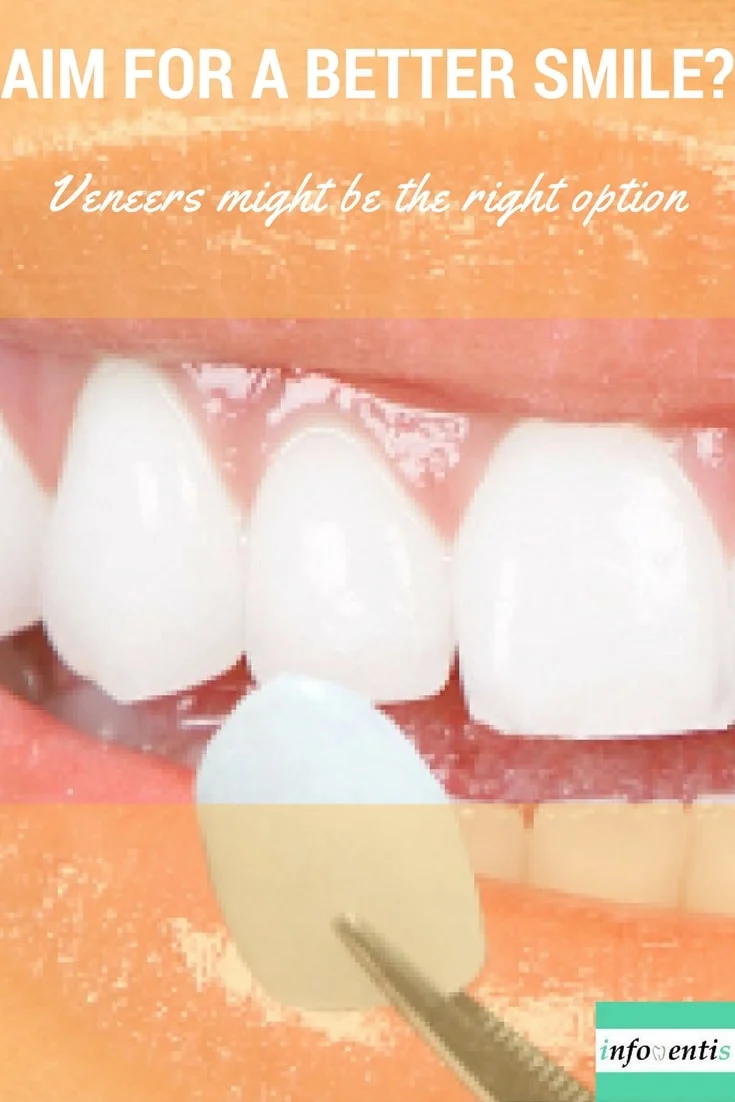
Veneers
A veneer is a thin layer of material placed over a tooth, either to improve the aesthetics of a tooth or to protect the tooth's surface from damage. There are two main types of material used to fabricate a veneer: dental composite and porcelain.
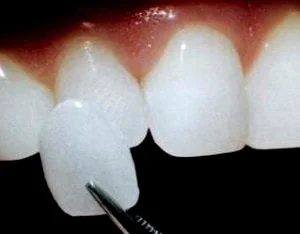
veneer
Normally, a veneer is fabricated by a dental technician in a dental laboratory and later bonded to the tooth, using specific multi-shade resin cement (indirect technique). However, some composite veneers may be directly built-up in the mouth.
Indications
Veneers are an important tool for the cosmetic dentist. A dentist may use one veneer to restore a single tooth that may have been fractured or discolored, or multiple veneers to create a type of makeover.
Indications may include:
-
Unsightly stains on the surface of teeth or yellow teeth that won't whiten



Small cavities or enamel defects
Worn teeth resulting in a prematurely aged appearance
Teeth that have been shortened by wear
Black triangles between teeth caused by gum recession
-
Veneers can be used to close unsightly gaps between teeth



-
Malpositioned teeth that appear crooked: veneers can provide a uniform color, shape, and symmetry, and make the teeth appear straight



Dental veneer procedure
Dental veneers can often be completed in two dental visits. If a composite veneer is directly built-up or the CAD/CAM technology is used, a veneer can be completed in one visit.
-
Clinical examination
The diagnostic and examination phase of dental veneer treatment is essential and identifies any oral health concerns that must first be addressed before veneer placement.
The best color is selected from the shade guide and imaging technologies can provide a preview of the expected results.
-
Tooth preparation
In many cases, minimal to no tooth preparation is needed.
After a local anesthetic is administered, the dentist will prepare the natural tooth (or teeth) by minimally reshaping it with dental burs attached to a hand-piece.
Usually, these burs are made of diamond or tungsten carbide and come in a range of sizes and shapes to allow precise and minimal shaping.
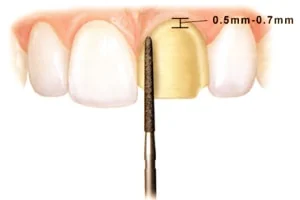
tooth preparation for a dental veneer
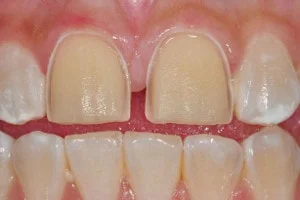
front teeth after the preparation
-
Direct build-up
If direct composite resin veneers are designed, the dentist will apply the appropriately shaded composite to the teeth, shape the material and harden it using a curing-light.
Additional layers of composite may be applied to build the veneer to the correct shape, length and form.
When all composite is placed, the veneers will be finished and polished using burs and polishers to create a vital and life-like smile.
-
Indirect veneers
If the treatment requires porcelain veneers or indirect composite veneers, the dentist will make an impression of the prepared teeth and send it to a dental lab. The dental technician will create a dental mould (or dental cast) and fabricate the veneers.
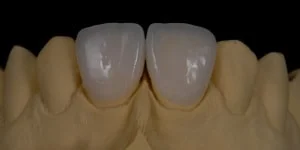
porcelain veneers on a dental mould
It is possible to place temporary veneers until the definitive ones are fabricated. Temporary veneers may not always be placed; when enough enamel remains on the surface of teeth, the dentist may forgo the temporary process.
The dental technician can use the CAD/CAM technology to fabricate the veneers (if it is available). This will shorten the process as the veneers can be made, bonded and adjusted onto the teeth in one visit.
-
Fitting and fixing
Regardless of the technique used, during the veneer placement appointment, the dentist will remove the temporaries and evaluate and adjust the newly placed veneers to ensure the optimal fit and color.
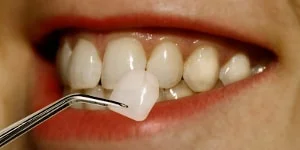
porcelain veneer, fitting and bonding
Usually, dental veneers are bonded to the tooth, typically using multi-shade resin cement to provide the best aesthetics.
Care and risks
Veneers are durable and have been shown to last for many years before requiring replacement. However, it is important to brush and floss the teeth properly and visit the dentist and/or hygienist for regular examinations and dental cleanings.
Like other porcelain restorations, chipping and fractures may occur. To reduce the risk of damage, it is advisable not to bite or chew on hard objects such as nut shells, bones or others.
Porcelain veneers vs composite veneers
What are the main differences between composite and porcelain veneers and how to choose between composite and porcelain veneers ? Find out by reading this article.



